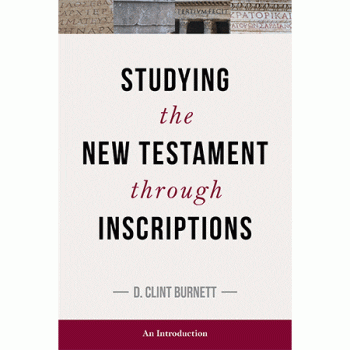The rejection of “other” Gospels by the proto-orthodox and orthodox church was neither arbitrary nor merely political. The reasons for rejecting them were cogent and compelling. Among the main criticisms lifted against the “other” Gospels and their authors is that: (1) The “Jesus” they set forth is not recognizable as the Jesus known in other sacred writings or congruent with apostolic tradition; (2) The “other” Gospels are often esoteric, elitist, and erroneous in what they affirm about God, creation, sin, holiness, ethics, and redemption; and (3) They do not properly have origins among Jesus’ earliest followers and are late and tendentious.
It was not the fault of Christian censors or a theological thought-police that the “other” Gospels were criticized and rejected. The “other” Gospels were not recognizable as “gospel,” and they failed to capture the hearts, minds, and imaginations of Christians in the worldwide church. The exclusion of other Gospels was not the result of the victory of the orthodox, it was rather based on an objective claim, as to who more properly transmitted the teaching of Jesus and the Apostles. In the end, the reason why the “other” Gospels lost out is because they simply failed to convince the majority of their antiquity and authenticity as a story of Jesus. According to Arland Hultgren:
In spite of the diversity of early Christianity, an expression of Christian faith arose in the first three centuries that claimed continuity with the faith of the apostles and is exhibited in the classic texts that come to make up the New Testament. Alternative expressions of faith, such as Marcionism, Montanism, Ebionitism, and Gnosticism, arose and made ‒to one degree or another‒the same or similar claims. But there were factors within them ‒confessional and communal‒that made those claims difficult to sustain.[1]
The early heresiologists wrote works that summarized the concerns and criticisms that many had about alternative Jesus’, fringe groups, and their literature.
In the context of discussing these “other” Gospels, Irenaeus put forth an eloquent, though sometimes peculiar, argument for the authority of the fourfold Gospel over and against alternative approaches.[2] First, Irenaeus identifies in the four Gospels a singular narrative, analogous to the regula fidei, that affirms God the creator, Moses and the prophets, and the dispensation of Jesus Christ. Second, he points out that certain deviant groups gravitate towards one particular Gospel and ignore the other three because it suits their peculiar (mis)claims and enables them to set aside the wider witnesses to God and Jesus.[3] Similarly, those who add more Gospels do so because of an audacious claim to have discovered more than the truth revealed in the Gospels, a truth that does not accord with the teachings of the Evangelists or the Apostle Paul.[4]
Eusebius is forthright in his account as to why certain books were rejected from the canon. In the case of the Gospels of Peter, Thomas, and Matthias, Eusebius declares that: “the type of phraseology used contrasts with apostolic style, and the opinions and thrusts of their contents are so dissonant from true orthodoxy that they show themselves to be forgeries of heretics. Accordingly, they ought not be reckoned even among the spurious books [like Gospel according to the Hebrews] but discarded as impious and absurd.”[5] This is not a groundless theological rant against other writings, but weighs them against an objective criteria: apostolic authenticity and catholic consensus. These “other” Gospels are esoteric rather than evangelical, they are oddities rather than orthodox. The plethora of alternative Gospels were not squeezed out by a power-hungry episcopal oligarchy hell-bent on erasing other stories of Jesus out of the history book to consolidate their own powerbase. Eusebius acknowledges the broad discussions about which sacred texts should be used and the debate was more than “in” or “out.” There was a reasonably attempt to be inclusive, hence the inclusion of disputed books like 2 Peter and Revelation, and to recognize books that while not considered canonical were still valued and esteemed by many. But when it came to the “other” Gospels, the fact is that were neither persuasive nor popular, and were never really serious contenders for inclusion in the canon. As Augustine wrote:
All those other individuals who have attempted or dared to offer a written record of the acts of the Lord or the apostles, failed to commend themselves in their own times as men of character which would induce the Church to yield them its confidence, and to admit their compositions to the canonical authority of the Holy Books. [Instead] they were condemned by the catholic and apostolic rule of faith and by sound doctrine.[6]
The rationale for rejecting the “other” Gospels was essentially doxlogical. The alternative accounts of Jesus did not correspond with the faith, worship, prayer, and devotion of Christians. A valid point since in the Gnostic Gospels, Jesus is not a historical figure, but a timeless symbol of redemption from the material world. The sayings tradition and stories about his life are ostentatiously converted into mythical signs and images, encoded for elite insiders, and then deciphered in a gnostic key. Simon Gathercole points out that the Gospel of Judas presents us with a disembodied Jesus, a loveless Jesus, and a Jesus without suffering.[7] According to Irenaeus, Basilides (who had his own Gospel) professed a Jesus who was not even crucified, but escaped by taking the form of Simon of Cyrene.[8] The Jesus of the Gospel of Thomas is not a Jewish Messiah, but more like a beatified beatnik dispensing amorphous aphorisms even advocating salvation by androgyny.[9] For many others, Jesus was not actually human, he was not even born, but merely appeared so as some kind of phantasm. These “other” Gospels, regardless of their tradition-history, are not historically oriented and regard Jesus as a cipher for a host of mythic realities, things that in a sense never were, but always are.[10] In fact, they are anachronistic to a ridiculous degree, akin to finding a document purportedly about Napoleon giving orders to his officers on tactics, but where he discusses nuclear submarines and B52 bombers therein.[11] These other Jesuses are neither the bearer nor the object of good news and were accordingly rejected by the proto-orthodox.
The reasons for rejecting the “other” Gospels were not incidental or based on the minutia of religious dogma, but concerned the very nature of Christian faith and what it meant to be a human being. The proto-orthodox movement, diverse as it was, could not accommodate views where: (1) The Father of Jesus was not the Creator of heaven and earth; (2) There is a division between the man Jesus and an astral entity called “Christ”; (3) The human problem was fundamentally a lack of self-awareness of their own cosmic origins; (4) Salvation exists only in the spiritual plane and does not pertain to the material world or bodily existence; and (5) Jesus was a revealer about truth rather than a redeemer by virtue of his incarnation, passion, and resurrection.[12]
Whereas a number of modern “Ivy League Gnostics,” as Rodney Stark call them,[13] seem to think that had Gnosticism or its theological cousins prevailed, then Christianity would somehow have been more tolerant, accepting, and fuzzier towards women, ethnic minorities, and gays. But nothing could be further from the truth. The Christ-believing groups that produced these Jesus Books had sectarian beliefs that were often demeaning and de-humanizing. Many regarded sexuality with disdain, denigrated bodily human existence, were virulently anti-Semitic, demonized the Old Testament, rejected marriage, saw women as symbolic for the human failure to be all one could be, engaged in speculative cosmology and multiplied semi-divine intermediaries to nonsensical degrees, insisted on a narrower selection of sacred texts as authoritative, regarded themselves as the sole possessors of a “true” revelation of Jesus, were so spiritually superior that sometimes they had to separate from others, and lacked any sense of social concern beyond their own introspective group. A religion of this order might have give us a guru like Deepak Chopra, who urges people to look for the god or divine spark within ourselves, but it wouldn’t have given us figures like Augustine, Martin Luther, William Wilberforce, Dietrich Bonhoeffer, or Mother Theresa.
That is not to say that the “other” Gospels are without value. They are vitally important for our study of early Christianity for several reasons. These writings prove the elastic way that “gospel” could be defined, they plot the various trajectories that Jesus traditions followed in some groups, they constitute a rigorous intellectual effort to make Christ-faith more palatable in a pagan context, they indicate the diverse expressions of Christ-faith in different regions, and demonstrate how images of Jesus continued to be shaped in the second and third centuries. Clement of Alexandria provides a prime example of how “other” Gospel traditions can be dealt with generously and even used in a creative dialogue with canonical accounts in order to illuminate and explicate the story of Jesus and its relevance for one’s own immediate situation.[14] Many of the church fathers made room for writings, though not canonical, were not dismissed as apocryphal, but remained “useful.” The classic case being hagiographical narratives like the Protevangelium of James and martyrologies such as The Passion of Perpetua and Felicitas. Indeed, artwork and iconography from Middle Ages and Byzantine period shows how non-canonical texts inspired artistic imaginations.[15]The non-canonical writings can still have great utility for exploring the development and density of the broad Christian tradition as it emerged in the early centuries.
[1] Arland J. Hultgren, The Rise of Normative Christianity (Eugene, OR: Wipf & Stock, 1994), 4.
[2] Irenaeus, Adv. Haer. 3.11.7-9.
[3] The examples are: Marcion with Luke, Ebionites with Matthew, Docetists with Mark, and Valentinians with John.
[4] The example is the Valentinians and the “Gospel of Truth.”
[5] Eusebius, Hist. Eccl. 3.25.
[6] Augustine, De Cons. 1.1.2.
[7] Simon Gathercole, The Gospel of Judas (Oxford: OUP, 2007), 162-71.
[8] Ireaneus, Adv. Haer. 1.24.4; cf. Apoc. Pet. 81; Qu’ran 4.157-58; in the Gospel of Barnabas (12th century), Judas morphs into Jesus and is crucified instead.
[9] Cf. esp. Gos. Thom. 114 and further in Craig A. Evans,
[10] To quote Sallustius, On Gods and the World, 4.
[11] N.T. Wright, Judas and the Gospel of Jesus: Have We Missed the Truth about Christianity?(Grand Rapids, MI: Baker, 2006), 63.
[12] Cf. Darrell L. Bock, The Missing Gospels: Unearthing the Truth Behind Alternative Christianities (Nashville, TN: Thomas Nelson, 2006), 208.
[13] Rodney Stark, Cities of God, 154.
[14] Cf. Hengel, Four Gospels and the One Gospel of Jesus Christ, 139-40.
[15] François Bovon, “Canonical, Rejected, and Useful Books,” in New Testament and Christian Apocrypha (ed. G.E. Snyder; Grand Rapids, MI: Baker, 2009), 321.











